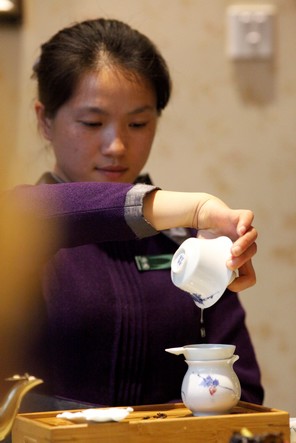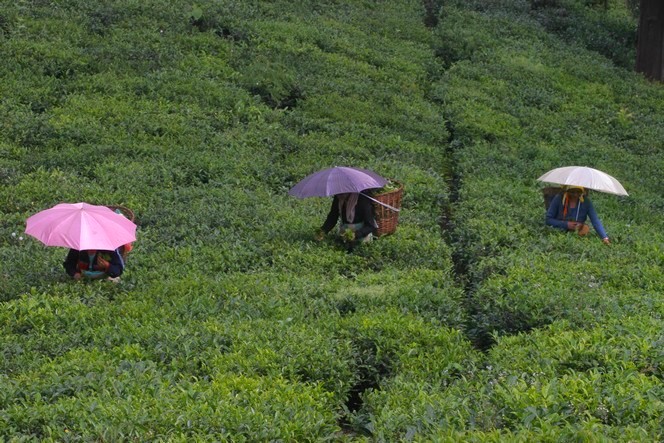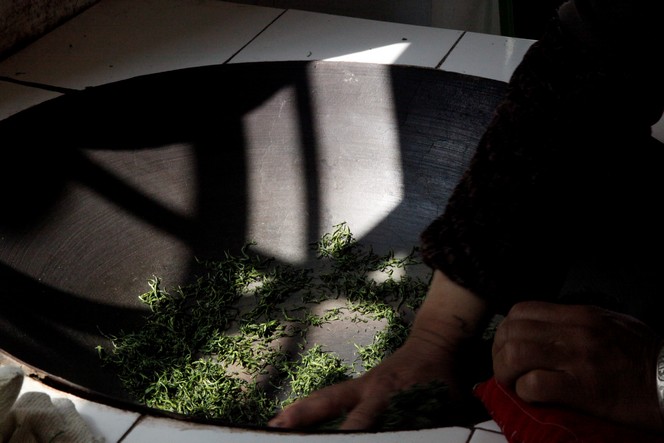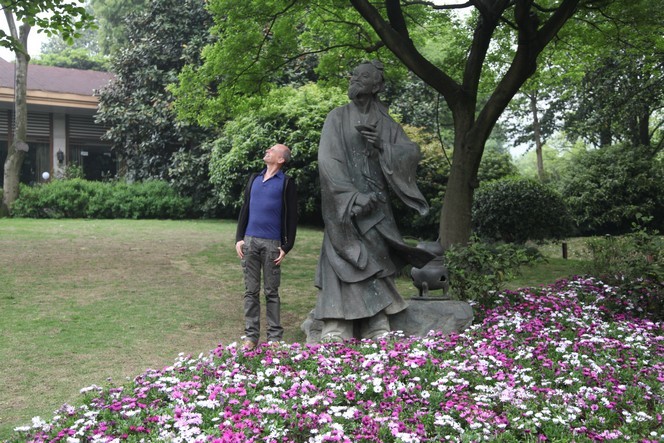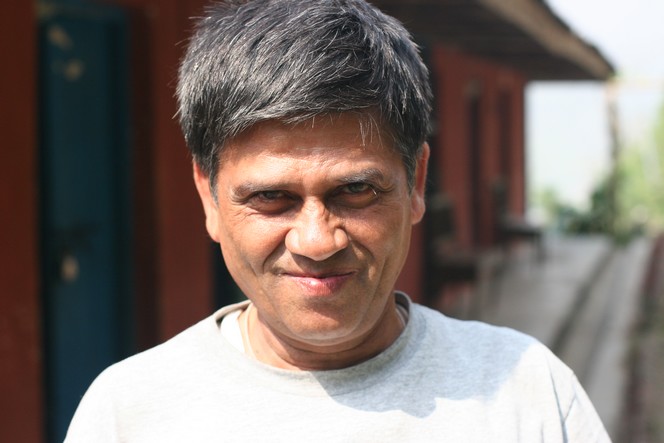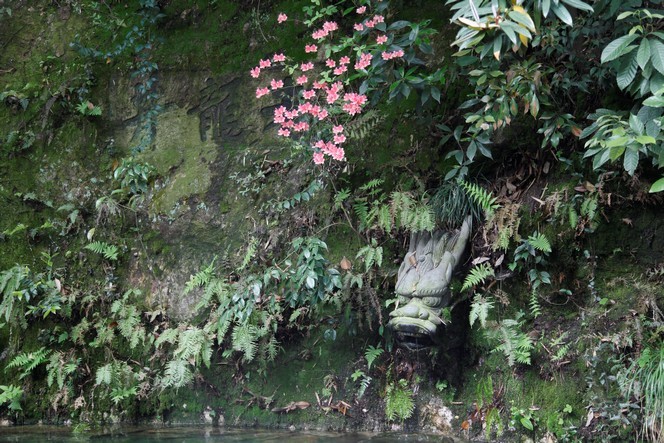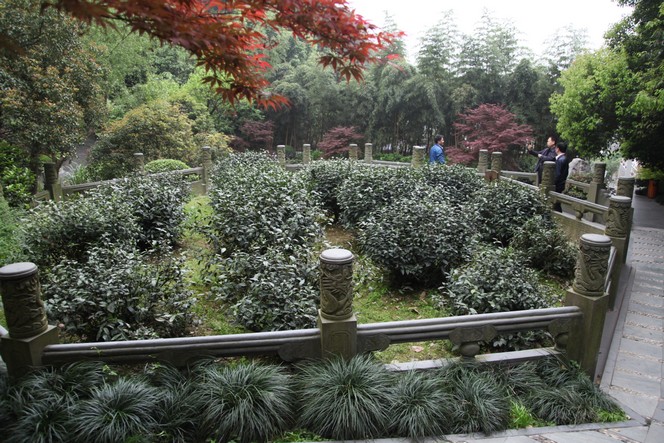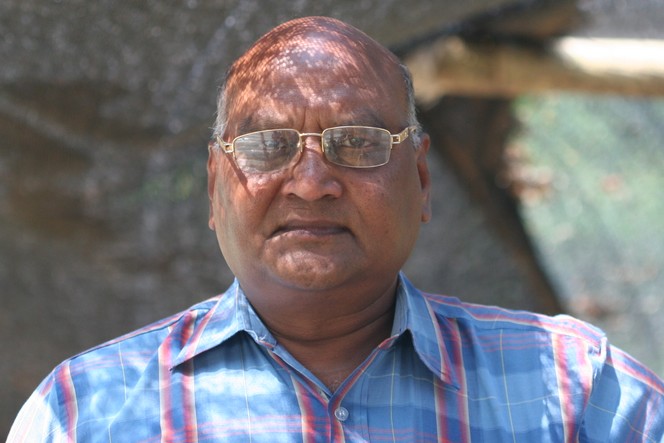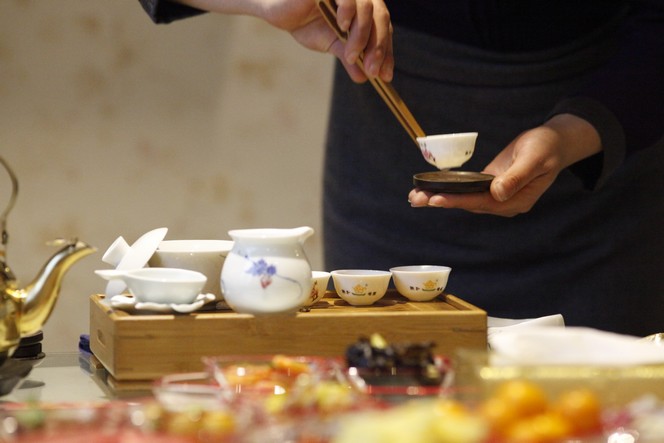In China, there are various ways of using the “zhong”. This recipient – also known as a “gaiwan” – can be used as a cup in which the tea infuses. You drink directly from it, retaining the cover and leaving a slight gap to hold back the leaves.
The “zhong” can also be used as a teapot for “gong-fu”, in which several short infusions are prepared. After each one, every last drop of tea is poured into a reserve pot, from which the guests’ tiny cups are filled.
Everyone then gets to taste a tea with particularly concentrated aromas, and to observe the changes in the liquor’s texture and fragrances, infusion after infusion.

